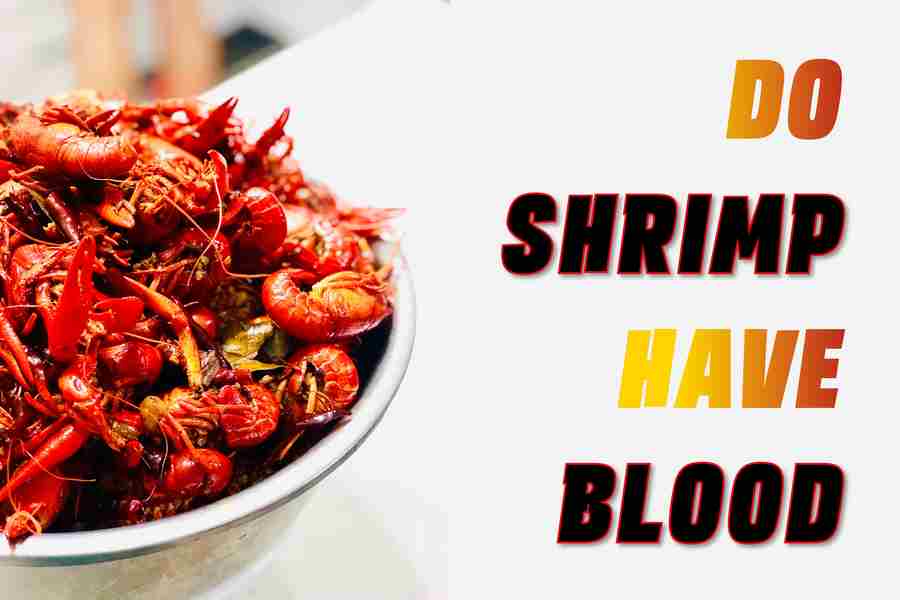Have you ever looked at a shrimp and wondered what’s going on there? Do they have blood as we do? How do they breathe? What do their insides look like? It turns out shrimp are incredibly fascinating creatures, both inside and out. From their diverse anatomy to their unique adaptations, there’s much to learn about these incredible invertebrates. So, do shrimp have blood? Let’s explore the anatomy of these creatures and find out!
Do Shrimp Have Blood?
Although shrimp have a hard exoskeleton, they do have blood. Blood vessels in the shrimp’s body are smaller than those in other animals, so their blood does not flow as quickly. This makes shrimp slow to react to danger, making them easy prey for predators.
What Is A Shrimp?
A shrimp is a type of aquatic crustacean, though they’re sometimes called prawns, too. They’re found in rivers, lakes, and oceans around the world. There are many shrimp species, but they all share a few common traits. Shrimp have two long swimmerets behind their tails that they use as feelers and two jointed, claw-like front legs used to catch food. They can also use their swimmerets for breathing if necessary. Shrimp are fascinating, unique creatures that play essential roles in many ecosystems. They’re a popular food item in many cultures and are used in various commercial products, too. They’re often farmed, and some species are considered pests because they damage crops.
Anatomy Of A Shrimp
- Shrimp have two long swimmerets behind their tails that they use as feelers and two jointed, claw-like front legs used to catch food.
- Shrimp can also use their swimmerets for breathing if necessary.
- Shrimp have a hard exoskeleton that protects them from predators and helps them move through the water.
- They have a pair of antennae on top of their heads to sense danger and communicate with other shrimp.
- The blood in a shrimp’s body is smaller than in other animals, so it doesn’t flow as quickly. This makes shrimp slow to react to danger, making them easy prey for predators.
- Shrimp is a popular food item in many cultures and are used in various commercial products.
- Shrimp are often farmed, and some species are considered pests because they damage crops.
- Shrimp are fascinating creatures that play essential roles in many ecosystems.
- Shrimp is a popular food item and are used in a variety of commercial products.
- Shrimp are unique and fascinating creatures that deserve to be more widely known.
How Do Shrimp Breathe?
- Shrimp use their two long swimmerets for breathing.
- If necessary, they can also use their gills for breathing.
- Their hearts pump hemolymph throughout the body and distribute oxygen to the tissues.
- Hemolymph is rich in oxygen and helps the shrimp to survive in anoxic environments.
- Shrimp can regulate their body temperature by moving water around their bodies.
- They can sense things in their environment with their antennae and eyes.
- Their small blood vessels slow them to react to danger, making them easy prey for predators.
- Some species are considered pests because they damage crops or compete with other animals for food resources.
- Shrimp are fascinating creatures that play important roles in many ecosystems.
- They’re a popular food item in many cultures and are used in various commercial products.
Shrimp Adaptations
- Shrimp can quickly move water around their bodies to regulate their temperature.
- They can sense things in their environment with their antennae and eyes.
- Their small blood vessels slow them to react to danger, making them easy prey for predators.
- Some species are considered pests because they damage crops or compete with other animals for food resources.
- Shrimp are fascinating creatures that play essential roles in many ecosystems.
- They’re a popular food item in many cultures and are used in various commercial products.
- Shrimp is a popular food item in many cultures and are used in a variety of commercial products.
- Shrimp can quickly move water around their bodies to regulate their temperature.
- They can sense things in their environment with their antennae and eyes.
- They’re a popular food item in many cultures and are used in various commercial products.
Shrimp Reproduction
- Shrimp eggs are laid in water and fertilized by the male shrimp.
- The eggs hatch into larvae that look a lot like miniature shrimp, but they lack the adult’s claws and have smaller eyes.
- The larvae grow into juvenile shrimp, and eventually, they become adults with their claws and eyes.
- The adults mate and then lay eggs that will hatch into more juvenile shrimp.
- The cycle repeats, and this process continues until the shrimp population reaches its limit or the environment changes and no longer supports them.
- Shrimp are hermaphrodites, meaning they have both male and female reproductive organs.
- Male shrimp use their claws to insert their sperm into the female’s body.
- The eggs are then fertilized, and the female seals the embryo inside her body.
- The next time she mates, she will lay eggs that will be fertilized by the male’s sperm and will develop into juvenile shrimp.
- The cycle continues until the shrimp population becomes too small or the environment changes, and they can no longer survive.
Conclusion
Shrimp are fascinating creatures that play essential roles in many ecosystems. They’re a popular food item in many cultures and are also used in many commercial products. They’re often farmed, and some species are considered pests because they damage crops. Shrimp have a unique organ used for breathing called the gill-like organ. They also have hearts that pump hemolymph throughout their bodies. They’re different from humans, as they don’t have blood, but hemolymph acts like blood. Shrimp are fascinating aquatic creatures with many unique adaptations that help them survive in their environment.

